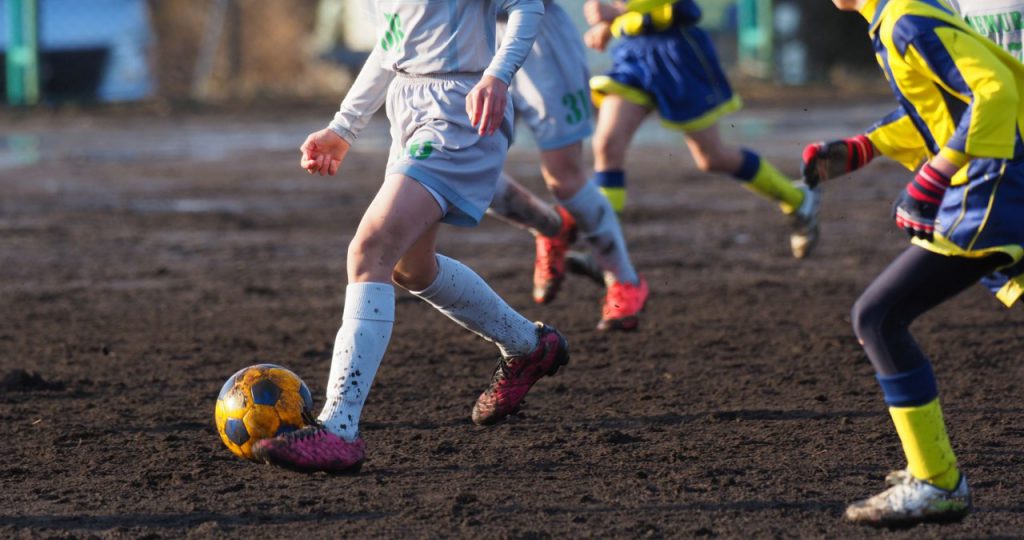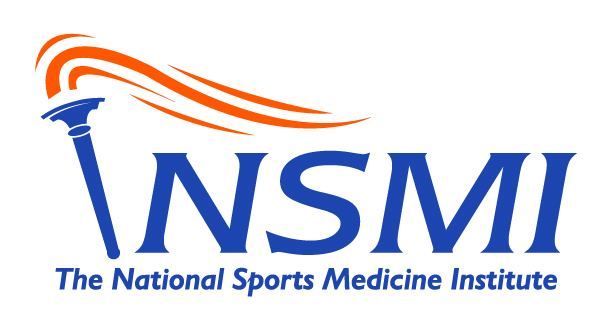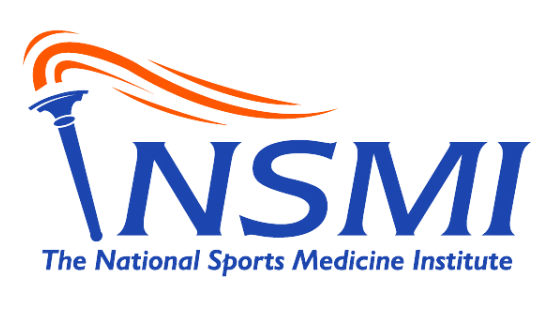
Collaborators: Nicole Schapiro MSAT, LAT, ATC, David C. Johnson MD, Timothy S. Johnson MD, Shannon L. Nicholson DNP, FNP
Editor: Briton Schaeufele, ATC, Daryl Copley CSCS
Affiliations: The National Sports Medicine Institute
What is Sports Specialization?
Sports specialization is the act of participating in and/or training for a single sport year-round. With increasing numbers and popularity of travel leagues for youth sports, sports specialization is becoming more common for young athletes. A growing number of coaches, parents, and children believe that to become a superior athlete they must play one sport from an early age year-round. [1-4] The pursuit of sports scholarships and professional contracts is a primary factor for driving sports specialization at an early age. [5]
What is Long-Term Athletic Development?
Long-term athletic development (LTAD) is a crucial concept for young athletes. It emphasizes the importance of a well-structured, progressive approach to training and competition over an extended period. At NSMI, we are committed to the principles of LTAD to help athletes reach their full potential in a healthy and sustainable manner. Our focus extends beyond immediate performance gains to ensuring athletes’ long-term well-being.
The key components of LTAD include:
- Physical Literacy: Developing a broad range of fundamental movement skills that form the foundation for athletic success.
- Periodization: Structuring training and competition across the year to optimize performance while minimizing the risk of injury and burnout.
- Age-Appropriate Training: Tailoring training programs to the athlete’s developmental stage, ensuring they progress at a pace that suits their physical and psychological growth.
- Rest and Recovery: Recognizing the significance of rest and recovery in athlete development, preventing overtraining, and promoting overall health.
- Multi-Sport Participation: Encouraging participation in multiple sports to foster a well-rounded athlete with diverse skills and abilities.
What are the effects of sports specialization?
Sport specialization in youth athletes is an evolving health issue. It may lead to physical, mental, and psychosocial harm such as injury, illness, and burnout. These detrimental effects may result in the athlete lacking the ability or desire to participate in sports as an ongoing lifestyle choice. [1,6-10]
Overtraining syndrome, or “burnout”, is the result of repeated, strenuous training sessions without adequate rest to allow for proper recovery. Overtraining syndrome is characterized by a decrease in performance, chronic muscle or joint pain, lack of enthusiasm about practice, and personality changes. Overtraining syndrome could last for several months and could ruin an athlete’s career. [2] A study by the University of Wisconsin School of Medicine and Public Health included over 1,500 high school athletes and found that athletes who specialized in one sport were twice as likely to report a lower extremity injury as compared to those who played multiple sports. [3]
Is early sports specialization necessary to play college sports?
No! According to a study that analyzed 303 NCAA Division I athletes from 19 different sports, 45% of athletes played multiple sports until they were age 16. Only 17% of athletes specialized by age 12 or younger, and those were athletes from tennis, swimming, and fencing teams. On average, team sport athletes specialized at age 15.5, and individual sport athletes specialized at age 14. [18] College coaches have also reported that they prefer multiple sport athletes because they perceive them to perform better at the intercollegiate level. [21]
What are the benefits to playing multiple sports?
Participating in multiple sports allows athletes to work different muscle groups and have the chance to take part in activities that target both strength and endurance. It helps to develop overall athleticism and physical literacy. Developing the fundamental movement skills required for all sports is the key to athletic success. Focusing on strength, power, endurance, agility, balance, and coordination should be done prior to developing more sport-specific skills. [2,4]
Recommendations:
The National Athletic Trainer’s Association’s official statement was in support of the following recommendations relating to the health and well-being of adolescent and young athletes. [4, 6-21]
- Delay Sport Specializing in a single sport for as long as possible: Adolescent and young athletes should strive to participate, or sample, a variety of sports. This recommendation supports general physical fitness, athleticism, and reduces injury risk in athletes.
- One team at a time: Adolescent and young athletes should participate in one organized sport per season. Many adolescent and young athletes participate or train year-round in a single sport, while completing in other organized sports simultaneously. Total volume of organized sport participation per season is an important risk factor for injury.
- Less than eight months per year: Adolescent and young athletes should not play a single sport more than eight months per year.
- No more hours/week than age in years: Adolescent and young athletes should not participate in organized sport and/or activity more hours per week than their age (i.e., a 12-year-old athlete should not participate in more than 12 hours per week of organized sport).
- Two days of rest per week: Adolescent and young athletes should have a minimum of two days off per week from organized training and competition. Athletes should not participate in other organized team sports, competitions, and or/training on rest and recovery days.
- Rest and Recovery time from organized sport participation: Adolescent and young athletes should spend time away from organized sport and/or activity at the end of each competitive season. This allows for both physical and mental recovery, promotes health and well-being, and minimizes injury risk and burnout/dropout.
Conclusion:
At the National Sports Medicine Institute, we understand the importance of well-rounded athletic development. In addition to emphasizing the risks of early specialization, we now offer a range of services designed to support the development of young athletes. Our services include:
- Our 365 Performance Training Program
- Customized Training Plans: Tailored programs that consider the athlete’s age, goals, and developmental stage.
- Expert Coaching: Our team of experienced coaches is dedicated to providing guidance and support, ensuring each athlete reaches their potential.
- Performance Testing: We utilize state-of-the-art technology, including DXA scans for body composition, Resting Metabolic Rate Testing, and VO2 max testing, to provide data-driven insights into an athlete’s progress.
- Mental and Emotional Support: We understand the importance of psychological well-being in athlete development and offer support to help athletes manage stress, set realistic goals, and stay motivated.
- Injury Prevention: Our program includes injury prevention strategies and exercises to reduce the risk of overuse injuries.
- DXA scans for body composition analysis
- Resting Metabolic Rate Testing
- VO2 max testing
- Nutritional counseling
- And a variety of other sports performance services
These services are tailored to assist youth athletes in achieving their full potential while minimizing the risks associated with sports specialization.
References
1. DiFiori JP, Benjamin HJ, Brenner JS, Gregory A, Jayanthi N, Landry GL, Luke A. Overuse injuries and burnout in youth sports: a position statement from the American Medical Society for Sports Medicine. Br J Sports Med. 2014;48(4):287-8. Epub 2014/01/28. doi: 10.1136/bjsports-2013-093299. PubMed PMID: 24463910.
2. Falgenbaum, AD. Overtraining in young athletes. ACSM. 2009. 13(4): 1-6
3. Bell DR, Post EG, Trigsted SM, Hetzel S, McGuine TA, Brooks MA. Prevalence of Sport Specialization in High School Athletics: A 1-Year Observational Study. Am J Sports Med. 2016: 44(6): 1469-74.
4. National Athletic Trainers’ Association Official Statement in Support of Sport Specialization Recommendations for Adolescent and Young Athletes October 2019. https://www.nata.org/sites/default/files/youth_sports_specialization_recommendations.pdf
5. Malina RM. Early Sport Specialization: Roots, Effectiveness, Risks. Curr Sports Med Rep. 2010: 9(6): 364-371.
6. Bell DR, Post EG, Biese K, Bay C, Valovich McLeod T. Sport Specialization and Risk of Overuse Injuries: A Systematic Review With Meta-analysis. Pediatrics. 2018;142(3). Epub 2018/08/24. doi: 10.1542/peds.2018-0657. PubMed PMID: 30135085.
7. DiStefano LJ, Beltz EM, Root HJ, Martinez JC, Houghton A, Taranto N, Pearce K, McConnell E, Muscat C, Boyle S, Trojian TH. Sport Sampling Is Associated With Improved Landing Technique in Youth Athletes. Sports Health. 2018;10(2):160-8. Epub 2017/11/14. doi: 10.1177/1941738117736056. PubMed PMID: 29131779; PMCID: PMC5857728.
8. Fabricant PD, Lakomkin N, Sugimoto D, Tepolt FA, Stracciolini A, Kocher MS. Youth sports specialization and musculoskeletal injury: a systematic review of the literature. Phys Sportsmed. 2016;44(3):257-62. Epub 2016/04/29. doi: 10.1080/00913847.2016.1177476. PubMed PMID: 27121730.
9. Hall R, Barber Foss K, Hewett TE, Myer GD. Sport specialization’s association with an increased risk of developing anterior knee pain in adolescent female athletes. J Sport Rehabil. 2015;24(1):31-5. Epub 2014/03/14. doi: 10.1123/jsr.2013-0101. PubMed PMID: 24622506; PMCID: PMC4247342.
10. Jayanthi N, Pinkham C, Dugas L, Patrick B, Labella C. Sports specialization in young athletes: evidence-based recommendations. Sports Health. 2013;5(3):251-7. Epub 2014/01/16. doi: 10.1177/1941738112464626. PubMed PMID: 24427397; PMCID: PMC3658407.
11. Jayanthi NA, Holt DB, Jr., LaBella CR, Dugas LR. Socioeconomic Factors for Sports Specialization and Injury in Youth Athletes. Sports Health. 2018;10(4):303-10. Epub 2018/06/01. doi: 10.1177/1941738118778510. PubMed PMID: 29851549; PMCID: PMC6044126.
12. Jayanthi NA, LaBella CR, Fischer D, Pasulka J, Dugas LR. Sports-specialized intensive training and the risk of injury in young athletes: a clinical case-control study. Am J Sports Med. 2015;43(4):794-801. Epub 2015/02/04. doi: 10.1177/0363546514567298. PubMed PMID: 25646361
13. LaPrade RF, Agel J, Baker J, Brenner JS, Cordasco FA, Cote J, Engebretsen L, Feeley BT, Gould D, Hainline B, Hewett T, Jayanthi N, Kocher MS, Myer GD, Nissen CW, Philippon MJ, Provencher MT. AOSSM Early Sport Specialization Consensus Statement. Orthop J Sports Med. 2016;4(4):2325967116644241. Epub 2016/05/12. doi: 10.1177/2325967116644241. PubMed PMID: 27169132; PMCID: PMC4853833.
14. Myer GD, Jayanthi N, Difiori JP, Faigenbaum AD, Kiefer AW, Logerstedt D, Micheli LJ. Sport Specialization, Part I: Does Early Sports Specialization Increase Negative Outcomes and Reduce the Opportunity for Success in Young Athletes? Sports Health. 2015;7(5):437-42. Epub 2015/10/27. doi: 10.1177/1941738115598747. PubMed PMID: 26502420; PMCID: PMC4547120.
15. Myer GD, Jayanthi N, DiFiori JP, Faigenbaum AD, Kiefer AW, Logerstedt D, Micheli LJ. Sports Specialization, Part II: Alternative Solutions to Early Sport Specialization in Youth Athletes. Sports Health. 2016;8(1):65-73. Epub 2015/10/31. doi: 10.1177/1941738115614811. PubMed PMID: 26517937; PMCID: PMC4702158.
16. Post EG, Green NE, Schaefer DA, Trigsted SM, Brooks MA, McGuine TA, Watson AM, Bell DR. Socioeconomic status of parents with children participating on youth club sport teams. Phys Ther Sport. 2018;32:126-32. Epub 2018/05/25. doi: 10.1016/j.ptsp.2018.05.014 10.1016/j.ptsp.2018.05.014. Epub 2018 May 17. PubMed PMID: 29793120.
17. Post EG, Trigsted SM, Schaefer DA, Cadmus-Bertram LA, Watson AM, McGuine TA, Brooks MA, Bell DR. Knowledge, Attitudes, and Beliefs of Youth Sports Coaches Regarding Sport Volume Recommendations and Sport Specialization. J Strength Cond Res. 2018. Epub 2018/02/27. doi: 10.1519/JSC.0000000000002529. PubMed PMID: 29481449.
18. Swindell HW, Marcille ML, Trofa DP, Paulino FE, Desai NN, Lynch TS, Ahmad CS, Popkin CA. An Analysis of Sports Specialization in NCAA Division I Collegiate Athletics. Orthop J Sports Med. 2019. 7(1): 2325967118821179. doi: 10.1177/2325967118821179. PMID: 30729145
19. Watson AM, Brickson S. Relationships between sport specialization, sleep, and subjective well-being in female adolescent athletes. Clin J Sport Med. In Press.
20. Bell DR, Post EG, Trigsted SM, Hetzel S, McGuine TA, Brooks MA. Prevalence of Sport Specialization in High School Athletics: A 1-Year Observational Study. Am J Sports Med. 2016. Epub 2016/02/28. doi: 10.1177/0363546516629943. PubMed PMID: 26920433.
21. Bell DR, Post EG, Trigsted SM, Schaefer DA, McGuine TA, Brooks MA. Parents’ Awareness and Perceptions of Sport Specialization and Injury Prevention Recommendations. Clin J Sport Med. 2018. Epub 2018/08/11. doi: 10.1097/JSM.0000000000000648. PubMed PMID: 30095505.

